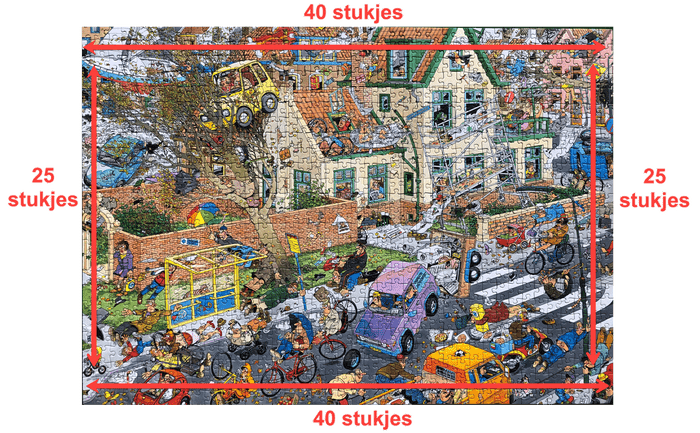
Jigsaw puzzles are a beloved pastime for people of all ages, offering a challenging and rewarding experience. When tackling a 1000-piece puzzle, one crucial element to consider is the number of edge pieces. These pieces form the outer border of the image, providing a foundation upon which you can build the rest of the puzzle. Understanding how many edge pieces are typically found in a 1000-piece puzzle can help you strategize your approach and make the puzzling process more efficient.
This article will delve into the world of 1000-piece jigsaw puzzles, specifically focusing on the number of edge pieces they contain. We’ll explore the general percentage of edge pieces in these puzzles, calculate the approximate range of edge pieces you can expect to find, and discuss the importance of edge pieces in building a complete puzzle image.
1000 Piece Jigsaw Puzzles
1000-piece jigsaw puzzles present a significant challenge due to their sheer size and complexity. These puzzles typically feature intricate images with numerous details, requiring patience, attention to detail, and strategic problem-solving skills. Completing a 1000-piece puzzle can be a truly satisfying accomplishment, offering a sense of pride and achievement upon completion.
The large number of pieces in these puzzles allows for a greater level of detail and complexity in the image itself. Whether it’s a stunning landscape, a captivating portrait, or a vibrant abstract design, 1000-piece puzzles offer a wide range of options to suit different tastes and preferences. The intricate nature of these puzzles also makes them a popular choice for puzzle enthusiasts who enjoy a more challenging and rewarding experience.
Edge Pieces in Puzzles
Edge pieces are the unique pieces that have one or two straight sides, forming the outer border of the jigsaw puzzle image. They differ from interior pieces, which have four curved sides. The presence of edge pieces is crucial because they define the shape and boundaries of the puzzle, providing a framework for assembling the rest of the pieces.
Edge pieces often feature distinct colors or patterns that help distinguish them from interior pieces. This visual cue can be helpful when sorting and organizing pieces during the puzzling process. Additionally, the straight sides of edge pieces make it easier to connect them with other edge pieces, forming the initial perimeter of the puzzle.
Percentage of Edge Pieces
In most jigsaw puzzles, including 1000-piece puzzles, edge pieces typically account for approximately 20% to 30% of the total number of pieces. This means that a 1000-piece puzzle will generally have around 200 to 300 edge pieces.
The percentage of edge pieces can vary slightly depending on the specific puzzle design and manufacturer. However, the 20% to 30% range is a widely accepted guideline for estimating the number of edge pieces in a standard 1000-piece puzzle.
Number of Edge Pieces
As mentioned earlier, a 1000-piece jigsaw puzzle typically contains between 200 and 300 edge pieces. This range provides a sufficient number of edge pieces to create a clear border for the puzzle image while still leaving a substantial number of interior pieces to challenge your puzzling skills.
When assembling a 1000-piece puzzle, it’s often helpful to start by sorting and organizing the edge pieces separately from the interior pieces. This can help streamline the puzzling process and make it easier to build the outer frame of the image first.
Building the Puzzle Framework
The edge pieces play a crucial role in building the framework for a jigsaw puzzle. By assembling the edge pieces first, you create a defined boundary for the puzzle image, providing a visual guide for placing the interior pieces.
Starting with the edge pieces allows you to establish the overall shape and dimensions of the puzzle, giving you a sense of the complete picture as it takes shape. This framework can also help prevent pieces from being misplaced or scattered during the puzzling process.
Conclusion
Understanding the number of edge pieces in a 1000-piece jigsaw puzzle is essential for tackling this challenging and rewarding pastime. With approximately 200 to 300 edge pieces forming the outer border, these puzzles offer a framework upon which you can build the complete image. By strategically assembling the edge pieces first, you can create a solid foundation for your puzzling journey and enjoy the satisfaction of completing a truly intricate masterpiece.
